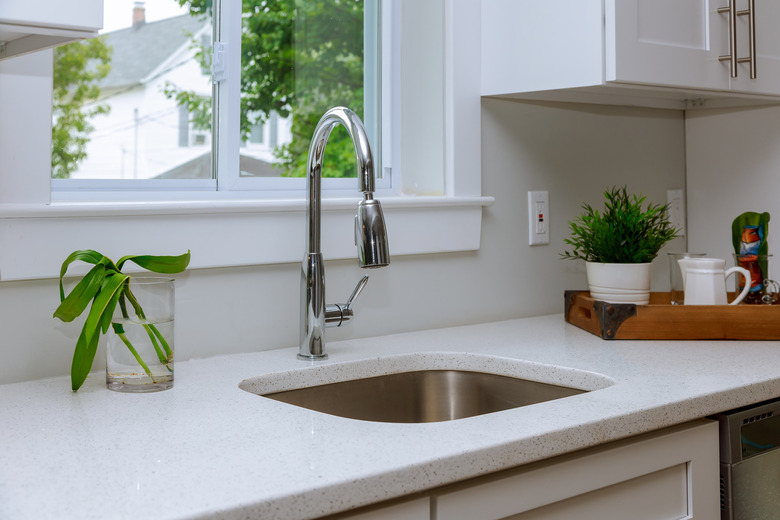How To Shut Off The Water Supply For A Kitchen Sink
We may receive a commission on purchases made from links.
Shutting off the water to your kitchen sink is an essential part of many repair and replacement jobs. There are multiple shutoff locations throughout every house, and they can be used for different purposes depending on the issue to be addressed. Water can be shut off right at a fixture or appliance, at the water heater or the main shutoff valve for the whole house. Depending on what your plumbing issue is and how widespread it is, you may need to work down the line, shutting off greater portions of the water supply until the issue is addressed.
Using the Sink Shutoff Valve
Using the Sink Shutoff Valve
Start with the kitchen sink shutoff valve. Turn the taps to the off position. Open the cabinet below the sink and remove anything stored there. You should see a large pipe, usually made of PVC, that has a vertical bend in it before running horizontally to the back wall (or, rarely, down to the floor). This is the sink drain pipe.
There should be two other pipes, generally metal or flexible lines, that go from the tailpieces of the faucet into the wall (or, again, sometimes the floor). These are the hot and cold water lines, with the cold typically being on the right and the hot on the left.
Types of Shutoff Valves
Types of Shutoff Valves
Trace the hot and cold water lines from the faucet tailpieces. Before they go into the wall or floor, there should be a knob or lever on each pipe or line. Most often, this is a football-shaped metal knob, but can also be round or a lever. For a knob, turn it clockwise to shut off the water.
For a lever, it should be parallel to the pipe in the open position and perpendicular to the pipe in the closed position, so turn it to a right angle to the pipe. Do this for both the hot and cold water pipes. Then turn on the tap or taps to clear the remaining water from the lines.
If the pipes disappear into the wall without visible shutoff valves directly under your sink, check in your basement or crawlspace. Find the area where the kitchen pipes enter the basement or crawlspace and look for shutoff valves there.
Turning Water Off Elsewhere
Turning Water Off Elsewhere
If the problem extends beyond the kitchen sink or if you can't find shutoff valves to the sink, you will have to turn off the water at the water heater, point of entry or even at the water main. As Life Savvy explains, there are a number of shutoff valves in most homes.
Check around the water heater first. There should be one pipe, warm to the touch, that leads out from the water heater and one pipe that bypasses the water heater. These are the hot and cold supply pipes for the entire house. Check for shutoff valves on both pipes and turn them off.
Using the Main Shutoff Valve
Using the Main Shutoff Valve
If necessary, like when the kitchen shutoff valve doesn't completely turn off the water as it should, you can proceed to shut off water to the entire house using the main shutoff valve. This is usually found where the main water line from the city enters the house. As Home Tips for Women explains, it is usually located by the meter. In areas where it gets below freezing, the meter and shutoff valve will be inside, usually in a utility space, basement or garage.
In warmer climates, the meter and main shutoff valve are often outside. If you shut off water to the whole house, open the highest faucet in the house and the lowest (such as in a basement sink or a foundation-level outside spigot) to drain the system of pressure.
To turn the water back on, turn each valve or lever you closed back to the open position by turning valves counterclockwise and flipping levers to be parallel to their pipes.
